Civilian Conservation Corps camps were really like small towns, with just about everything an enrollee would need to live and work and thrive – well almost everything. In the early phases of the program, camps were of permanent construction, sometimes built using enrollee labor and sometimes built by local construction crews. Once the CCC work was done in an area, the camps were often turned over to the local community or simply abandoned with portable equipment and material being salvaged for use elsewhere. Eventually the expense of this practice began to come home to Robert Fechner, the director of the CCC and in 1936 it was decreed that all future CCC camps would be made up of portable structures, built from a pre-cut standard design. This decision was hailed by local officials. (It is also worth pointing out that some architecture historians claim that portable buildings really didn’t come into being until after the U.S. entry into World War II, but the fact of the matter is that the CCC was doing it long before 1941.) With the switch to portable buildings, the camp plan was also standardized, in that it called for each camp to have four barracks buildings, one mess hall, one classroom building, one latrine building, bath houses, and twelve additional structures to house camp officers and for other camp operational functions.
While the building types remained constant after 1936, the configuration of CCC camps varied from region to region and from location to location, due to differences in topography, geography and the availability of a potable water source. Some camps were arranged around a central, open area where company formations were held and other camps were arranged in neat rows, often tightly grouped to make the best use of available space on a small, open piece of flat ground.
So then, let’s have a look at Company 642 and their community at CCC Camp Riley Creek, F-3-(WIS) in Fifield, Wisconsin to see if we can get a feel for how the enrollees lived and played in their small “town.” These images come from a series of photos taken at the camp in October 1940.

A closer look at camp commander Schmeichel and his staff. For some reason, the foremen from the technical service are not pictured with the group, but they would have been men from the U.S. Forest Service or possibly a state department of forestry. For the purposes of our analogy, these men represent the mayor and town council of our little town.

Company 642 included 10 leaders and 16 assistant leaders. This young man has been promoted to a leader position as evidenced by the three stripes on his sleeves. Additionally, he carries some other rating, which is unclear, but may be a first aid insignia.

Not all the enrollees sport the CCC shoulder patch, which could indicate that this was a private purchase item. This smiling fellow does have the CCC shoulder patch on his left shoulder.

This young man has a variant of the CCC patch: a shield with the letters “CCC” over an image of a surveying transit and a pine tree.

This guy elected to display his CCC patch in a rather unorthodox way: sewn to the front of his uniform trousers.
Company 642 had a few tough customers….
...and a few who seemed to always be having a good time.

Company 642 also had a few fellows who looked to be barely out of high school.
Of course, Camp F-3-W was like many, many CC camps in that it had at least one pet or mascot. In this case it’s man’s best friend, but some camps claimed bear, deer and raccoons as pets.



Here is a view of the camp mess hall and the interior of one of the barracks. In the mess hall you can see the kitchen area off to the right. The camp commander and his staff may have taken their meals at the single table at the back corner of the building. Interestingly enough, camp commanders and technical service foremen did not eat in the mess hall for free, but were charged for meals eaten in the camps.
 The barracks is Spartan – the CCC was not a summer pleasure camp. Noteworthy in this picture are the raincoats and laundry bags hung neatly by each bunk. Also of note is the nametag affixed to each bunk and the three heating stoves. Often the stoves were barely sufficient to keep the barracks warm and usually an enrollee was assigned the job of making sure the stoves kept burning all night.
The barracks is Spartan – the CCC was not a summer pleasure camp. Noteworthy in this picture are the raincoats and laundry bags hung neatly by each bunk. Also of note is the nametag affixed to each bunk and the three heating stoves. Often the stoves were barely sufficient to keep the barracks warm and usually an enrollee was assigned the job of making sure the stoves kept burning all night.This view shows the camp canteen and library. Small items like candy, combs, pipes and smoking tobacco were offered for sale in the camp canteen, which was run by an enrollee. The funds usually went toward the purchase of items to improve camp life.
 In most camps, the reading room was usually a place for quiet study, letter writing and occasionally evening classes in forestry, leather crafts, mathematics or reading. The camp F-3-W library appears to have a good selection of magazines and you’ll note a sign that reads “Do It Now,” hanging from the ceiling.
In most camps, the reading room was usually a place for quiet study, letter writing and occasionally evening classes in forestry, leather crafts, mathematics or reading. The camp F-3-W library appears to have a good selection of magazines and you’ll note a sign that reads “Do It Now,” hanging from the ceiling.  Thus ends our virtual tour of Camp Riley Creek F-3-W in Fifield, Wisconsin. In pondering these young men as they looked in October 1940, it’s important to consider that many of them probably went into the military not too very long after these photos were taken. It’s sad to think that some of these bright, eager faces may not have returned from the World War they went off to fight. Likely, they would prefer that we remember them for their service in helping stamp out totalitarianism and we certainly do remember and honor their service, but we’d do well to also remember a more peaceful time that no doubt shaped their perceptions of democracy and fairness, ultimately leading to that most significant of sacrifices. We should also remember those who survived and went on to have useful, vital, productive lives. Certainly our thanks go out to all of them, the residents of this tidy little town near Fifield, Wisconsin.
Thus ends our virtual tour of Camp Riley Creek F-3-W in Fifield, Wisconsin. In pondering these young men as they looked in October 1940, it’s important to consider that many of them probably went into the military not too very long after these photos were taken. It’s sad to think that some of these bright, eager faces may not have returned from the World War they went off to fight. Likely, they would prefer that we remember them for their service in helping stamp out totalitarianism and we certainly do remember and honor their service, but we’d do well to also remember a more peaceful time that no doubt shaped their perceptions of democracy and fairness, ultimately leading to that most significant of sacrifices. We should also remember those who survived and went on to have useful, vital, productive lives. Certainly our thanks go out to all of them, the residents of this tidy little town near Fifield, Wisconsin. 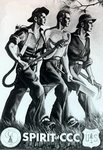
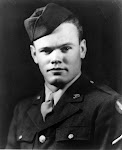





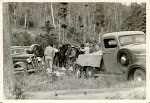
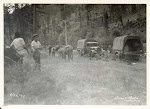



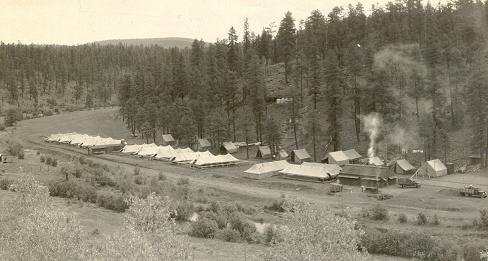


3 comments:
This brings back alot of memories. Everytime I go Camping I think back to the days where my grandpa was in a conservation camp. Great site!
Gee, what a pleasant surprise to find this site! My father, Hillard Shedleski, was in the Riley Creek CCC Camp. As I understand the story, he was having trouble getting a decent job after he graduated from high school in 1939, so he went to the CCC Camp. The Camp residents wore military-style khaki clothing and slept in open-bay barracks. He said it was a pretty good deal because you were clothed and well fed and were even paid a small salary. I think half of your salary was sent back to your parents.
He did say that there were lots of activities to keep the boys busy at night. He mentioned taking a couple of classes but I no longer remember what he was taught. On weekends, they would often get (or hitch) a ride into Fifield or other nearby towns, most of which were very small with little to do.
After several months in the Camp, he was called to the headquarters building and told that “they had found a job for me.” It was unclear who “they” were. In any case, he packed up his gear and went home to his new job.
When I was in about the 8th Grade in 1968, he took me to where the Camp was. At that young age, I was puzzled how he could easily find his way around those unmarked roads deep in the woods. Even though he hadn’t been in the Camp in 30 years, he knew those roads like the back of his hand. He stopped a couple of times and said things like “See those trees over there? I planted them.” It has been a long time, but I seem to recall hundreds and hundreds of trees lined up in uniform rows.
We finally stopped in a clearing in the woods and he showed me the old, partially-overgrown gravel pads that supported the various Camp buildings. Most of the buildings were no longer there, but I think the Camp Commandant’s house had been repurposed as a park ranger station or residence.
I asked if he had regrets about seeing the Camp area in such a desolate state but he said that it didn’t bother him at all. He expressed little or no nostalgia for the place.
At the time, I had no idea what the CCC was or why I should care. Eighth-grade boys are just not concerned about such things. I’m surprised that I still remember my father’s CCC stories.
However, in the basement of the house I grew up in, there was a framed “team photo” similar to or identical with the one on this website. There was also a small green pennant with the CCC logo and some hand-stitching spelling out Camp F-3, Riley Creek. I never understood if he did the stitching or if somebody else did.
After my father passed away and my mother left the house, my older brother used to have the picture hanging in his basement.
Gee, what a pleasant surprise to find this site! My father, Hillard Shedleski, was in the Riley Creek CCC Camp. As I understand the story, he was having trouble getting a decent job after he graduated from Menasha High School in 1939, so he went to the CCC Camp. The Camp residents wore military-style khaki clothing and slept in open-bay barracks. He said it was a pretty good deal because you were clothed and well fed and were even paid a small salary. I think half of your salary was sent back to your parents.
He did say that there were lots of activities to keep the boys busy at night. He mentioned taking a couple of classes but I no longer remember what he was taught. On weekends, they would often get (or hitch) a ride into Fifield or other nearby towns, most of which were very small with little to do.
After several months in the Camp, he was called to the headquarters building and told that “they had found a job for me.” It was unclear who “they” were. In any case, he packed up his gear and went home to his new job at Kimberly Clark Lakeview Mill in Neenah.
When I was in about the 8th Grade in 1968, he took me to where the Camp was. At that young age, I was puzzled how he could easily find his way around those unmarked roads deep in the woods. Even though he hadn’t been in the Camp in 30 years, he knew those roads like the back of his hand. He stopped a couple of times and said things like “See those trees over there? I planted them.” It has been a long time, but I seem to recall hundreds and hundreds of trees lined up in uniform rows.
We finally stopped in a clearing in the woods and he showed me the old, partially-overgrown gravel pads that supported the various Camp buildings. Most of the buildings were no longer there, but I think the Camp Commandant’s house had been repurposed as a park ranger station or residence.
I asked if he had regrets about seeing the Camp area in such a desolate state but he said that it didn’t bother him at all. He expressed little or no nostalgia for the place. But he cherished his time in the CCC itself.
At the time, I had no idea what the CCC was or why I should care. Eighth-grade boys are just not concerned about such things. I’m surprised that I still remember my father’s CCC stories.
However, in the basement of the house I grew up in, there was a framed “team photo” identical with the one on this website. There was also a small green pennant with the CCC logo and some hand-stitching spelling out Camp F-3, Riley Creek. I never understood if he did the stitching or if somebody else did.
After my father passed away and my mother left the house, my older brother used to have the picture and the pennant hanging in his basement.
Bill Sheleski
Post a Comment